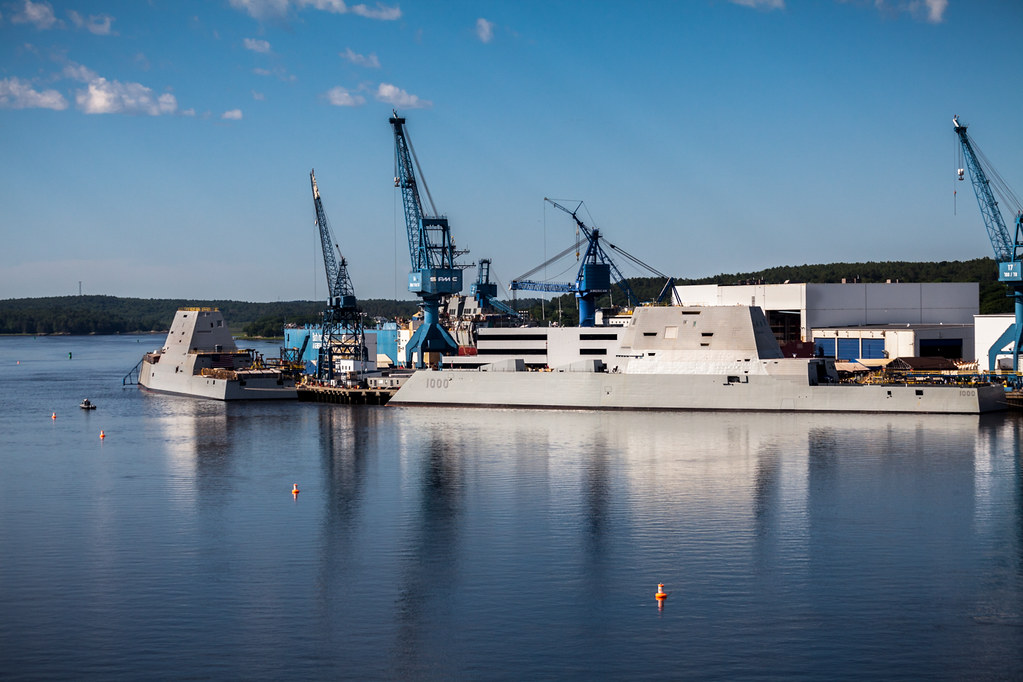
The U.S. Navy stands as a cornerstone of national defense, a formidable presence on the world’s oceans, embodying both tradition and continuous innovation. From the very identifier that graces its commissioned vessels — the venerable “USS” prefix — to the strategic pronouncements of its senior leadership, every aspect reflects a deep commitment to readiness and excellence. This deep-seated heritage and forward-looking vision coalesce into a dynamic force, constantly adapting to an ever-evolving global landscape.
In this extensive exploration, we embark on a journey that delves into the foundational nomenclature of the U.S. Navy, unraveling the historical directives that shaped how its ships are officially recognized. We then pivot to the contemporary challenges and visionary solutions put forth by the 34th Chief of Naval Operations, Admiral Daryl Caudle, whose recent messages chart a clear course for enhancing the service’s war-fighting capabilities. His insights provide a roadmap for an invigorated Navy, one that leverages its most potent assets — its people and its infrastructure — to secure a decisive advantage against emerging threats.
This article will unpack the layers of commitment to an enduring legacy and a robust future, revealing the intricate tapestry of decisions and directions that ensure the U.S. Navy remains a preeminent global power. We will examine how a seemingly simple prefix signifies a ship’s status and how comprehensive strategies are being implemented to forge a continuously learning, technologically advanced, and impeccably maintained naval force ready for any challenge.

1. **The Official Designation: “United States Ship” (USS)**The prefix “United States Ship,” widely abbreviated as USS or U.S.S., serves as the definitive identifier for a commissioned ship of the United States Navy. This designation is not merely a formality; it unequivocally signifies the vessel’s official status and its active role within the nation’s naval fleet.
It is crucial to understand that this prefix applies to a ship only while it is actively in commission. The moment a vessel enters this status, it proudly bears the USS designation, marking its readiness for duty and its integration into the U.S. Navy’s operational structure. This clear demarcation ensures that there is no ambiguity regarding a ship’s active service status.
This official identifier establishes a standard method of referring to U.S. Navy ships in all formal documents and communications. It provides a universal recognition that transcends individual ship names, immediately communicating its fundamental identity and purpose within the broader naval force.
Indeed, the USS prefix functions as a symbol of national presence and authority on the seas. Each ship carrying this designation represents the commitment and capability of the United States Navy, projecting its power and upholding its responsibilities across the globe.
Military equipment: United States Ship
Title: Navy Christens Guided-Missile Destroyer Michael Murphy
Last: Lasco
First: Dominique
Url: http://www.navy.mil/search/display.asp?story_id=60229
ArchiveUrl: https://archive.today/20121213000631/http://www.navy.mil/search/display.asp?story_id=60229
UrlStatus: dead
ArchiveDate: Thu Dec 13 2012 00:00:00 GMT-0800 (Pacific Standard Time)
AccessDate: United States Naval Ship
Categories: All stub articles, Articles with short description, Navy stubs, Ship prefixes, Ships of the United States Navy
Summary: United States Ship (abbreviated as USS or U.S.S.) is a ship prefix used to identify a commissioned ship of the United States Navy and applies to a ship only while it is in commission. Before commissioning, the vessel may be referred to as a “pre-commissioning unit” (PCU), but is officially referred to by name with no prefix. After decommissioning, it is referred to by name with no prefix, though people commonly refer to those ships with the prefix “ex-“, as in ex-ship name. In-service but non-commissioned Navy ships go by the prefix USNS, which stands for United States Naval Ship.
From the early beginnings of the U.S. Navy there had been no standard method of referring to U.S. Navy ships until 1907 when President Theodore Roosevelt issued Executive Order 549 on 8 January stating that all U.S. Navy ships were to be referred to as “The name of such vessel, preceded by the words, United States Ship, or the letters U.S.S., and by no other words or letters”.
Today’s Navy Regulations define the classification and status of naval ships and craft:
The Chief of Naval Operations shall be responsible for … the assignment of classification for administrative purposes to water-borne craft and the designation of status for each ship and service craft.
Commissioned vessels and craft shall be called “United States Ship” or “U.S.S.”
Civilian crewed ships, of the Military Sealift Command or other commands, designated “active status, in service” shall be called “United States Naval Ship” or “U.S.N.S.”
Ships and service craft designated “active status, in service,” except those described by paragraph 3 of this article, shall be referred to by name, when assigned, classification, and hull number (e.g., “HIGH POINT PCH-1” or “YOGN-8”).
— United States Navy Regulations, 1990, Article 0406.
Get more information about: United States Ship
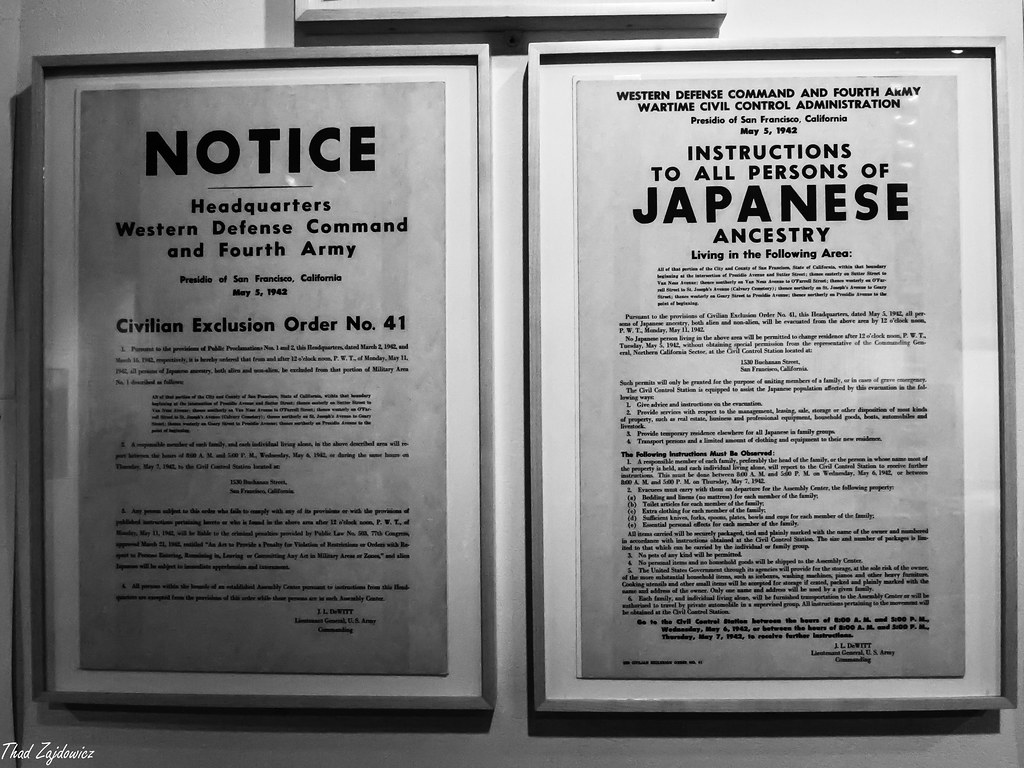
2. **The Evolution of a Standard: President Roosevelt’s 1907 Executive Order**In the early formative years of the U.S. Navy, there was a noticeable absence of a standardized method for referring to its ships. This lack of uniformity could lead to inconsistencies and potential confusion in official and unofficial discourse regarding naval assets.
This situation changed decisively in 1907 when President Theodore Roosevelt took action to codify how U.S. Navy ships would be formally addressed. On January 8, he issued Executive Order 549, which established a clear and consistent protocol for all naval vessels.
Executive Order 549 explicitly stated that all U.S. Navy ships were to be referred to as “The name of such vessel, preceded by the words, United States Ship, or the letters U.S.S., and by no other words or letters.” This directive left no room for interpretation, mandating a specific and singular form of address.
This presidential order was a pivotal moment, introducing a mandatory and uniform system that has endured for over a century. It brought order and formality to the nomenclature of the Navy, ensuring that every commissioned vessel was recognized with the same dignified and official prefix, enhancing institutional clarity and pride.
Military equipment: Theodore Roosevelt
Caption: Roosevelt in 1904
Order: 26th
Office: President of the United States
Vicepresident: Efn,longitem
TermStart: September 14, 1901
TermEnd: March 4, 1909
Predecessor: William McKinley
Successor: William Howard Taft
Order2: 25th
Office2: Vice President of the United States
President2: William McKinley
TermStart2: March 4, 1901
TermEnd2: September 14, 1901
Predecessor2: Garret Hobart
Successor2: Charles W. Fairbanks
Order3: 33rd
Office3: Governor of New York
Lieutenant3: Timothy L. Woodruff
TermStart3: January 1, 1899
TermEnd3: December 31, 1900
Predecessor3: Frank S. Black
Successor3: Benjamin Barker Odell Jr.
Order4: 5th
Office4: Assistant Secretary of the Navy
President4: William McKinley
TermStart4: April 19, 1897
TermEnd4: May 10, 1898
Predecessor4: William McAdoo (New Jersey politician)
Successor4: Charles Herbert Allen
Office5: President of the New York City Board of Police Commissioners
Appointer5: William Lafayette Strong
TermStart5: May 6, 1895
TermEnd5: April 19, 1897
Predecessor5: James J. Martin
Successor5: Frank Moss (lawyer)
StateAssembly6: New York
District6: New York’s 21st State Assembly district
TermStart6: January 1, 1883
TermEnd6: December 31, 1884
Predecessor6: William J. Trimble
Successor6: Henry A. Barnum
BirthDate: [object Object]
BirthName: Theodore RooseveltnbspJr.
BirthPlace: New York City
DeathDate: [object Object]
DeathPlace: Oyster Bay, New York
RestingPlace: Youngs Memorial Cemetery
Party: Republican Party (United States)
Otherparty: Bull Moose Party
Spouse: [object Object]
Children: 6
Relatives: Roosevelt family
AlmaMater: Harvard University,Columbia Law School
Occupation: Author,conservationist,explorer,historian,naturalist,police commissioner,politician,soldier
Signature: Theodore Roosevelt Signature-2.svg
SignatureAlt: Cursive signature in ink
Awards: Nobel Peace Prize
Allegiance: United States
Branch: United States Army
Serviceyears: 1882–1886 (guard),1898
Rank: Colonel (United States)
Unit: New York Army National Guard
Mawards: Medal of Honor,avoid wrap
Commands: 1st U.S. Volunteer Cavalry
Battles: Battle of Las Guasimas
Module: Listen
Categories: 1858 births, 1900 United States vice-presidential candidates, 1900s in the United States, 1912 in American politics, 1919 deaths
Summary: Theodore Roosevelt Jr. (October 27, 1858 – January 6, 1919), also known as Teddy or T. R., was the 26th president of the United States, serving from 1901 to 1909. Roosevelt previously was involved in New York politics, including serving as the state’s 33rd governor for two years. He served as the 25th vice president under President William McKinley for six months in 1901, assuming the presidency after McKinley’s assassination. As president, Roosevelt emerged as a leader of the Republican Party and became a driving force for anti-trust and Progressive Era policies.
A sickly child with debilitating asthma, Roosevelt overcame health problems through a strenuous lifestyle. He was homeschooled and began a lifelong naturalist avocation before attending Harvard University. His book The Naval War of 1812 established his reputation as a historian and popular writer. Roosevelt became the leader of the reform faction of Republicans in the New York State Legislature. His first wife Alice Hathaway Lee Roosevelt and mother Martha Bulloch Roosevelt died on the same night, devastating him psychologically. He recuperated by buying and operating a cattle ranch in the Dakotas. Roosevelt served as the assistant secretary of the Navy under McKinley, and in 1898 helped plan the successful naval war against Spain. He resigned to help form and lead the Rough Riders, a unit that fought the Spanish Army in Cuba to great publicity. Returning a war hero, Roosevelt was elected New York’s governor in 1898. The New York state party leadership disliked his ambitious agenda and convinced McKinley to choose him as his running mate in the 1900 presidential election; the McKinley–Roosevelt ticket won a landslide victory.
Roosevelt began his presidency at age 42 once McKinley was killed. He thus became (and remains) the youngest person to assume the position. As a leader of the progressive movement, he championed his “Square Deal” domestic policies, which called for fairness for all citizens, breaking bad trusts, regulating railroads, and pure food and drugs. Roosevelt prioritized conservation and established national parks, forests, and monuments to preserve U.S. natural resources. In foreign policy, he focused on Central America, beginning construction of the Panama Canal. Roosevelt expanded the Navy and sent the Great White Fleet on a world tour to project naval power. His successful efforts to end the Russo-Japanese War won him the 1906 Nobel Peace Prize, the first American to win a Nobel Prize. Roosevelt was elected to a full term in 1904 and convinced William Howard Taft to succeed him in 1908.
Roosevelt grew frustrated with Taft’s brand of conservatism and tried, and failed, to win the 1912 Republican presidential nomination. He founded the Bull Moose Party and ran in 1912; the split allowed the Democrat Woodrow Wilson to win. Roosevelt led a four-month expedition to the Amazon basin, where he nearly died of tropical disease. During World War I, he criticized Wilson for keeping the U.S. out; his offer to lead volunteers to France was rejected. Roosevelt’s health deteriorated and he died in 1919. Polls of historians and political scientists rank him as one of the greatest American presidents.
Get more information about: Theodore Roosevelt
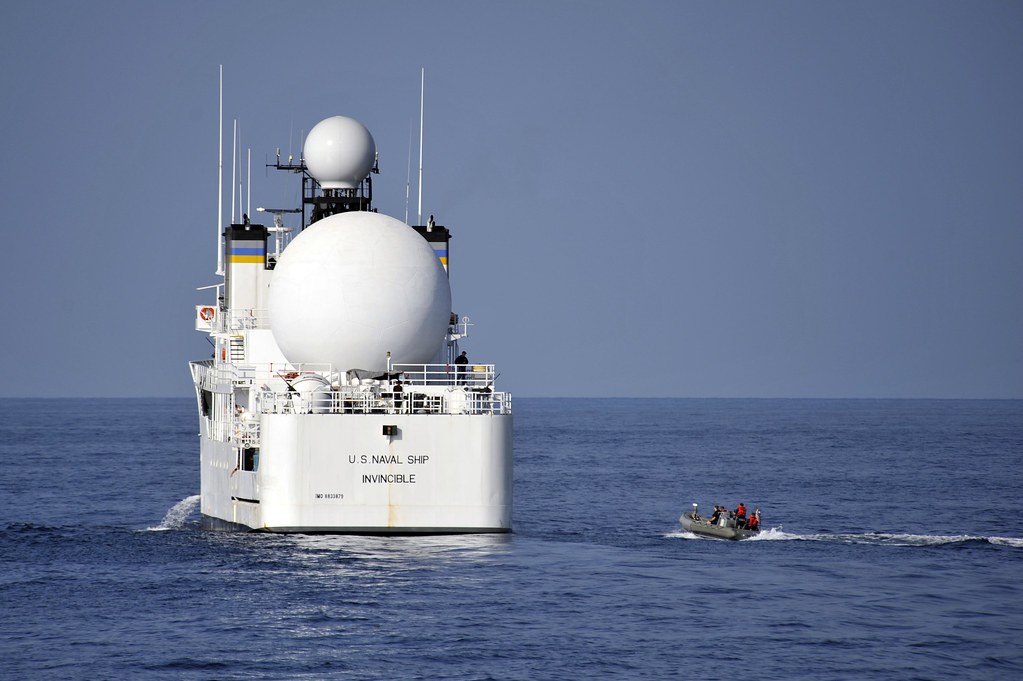
3. **Beyond Commission: Pre-, Post-, and Non-Commissioned Designations**The life cycle of a naval vessel involves several stages, and the use of prefixes accurately reflects its current status. Before a ship is officially commissioned into service, it operates under different naming conventions.
During its construction and fitting-out phase, prior to commissioning, a vessel may be referred to as a “pre-commissioning unit,” often abbreviated as PCU. Alternatively, it is officially referred to by its name with no prefix at all, indicating that it has not yet achieved its full operational status within the fleet.
Similarly, once a ship is decommissioned, its formal designation changes. It is then referred to solely by its name, again with no prefix, signifying its departure from active service. However, it is a common practice among naval enthusiasts and the public to refer to such vessels with the prefix “ex-“, as in “ex-ship name,” acknowledging its past service.
Adding another layer of distinction, ships that are in-service but not commissioned by the Navy utilize the prefix USNS, which stands for “United States Naval Ship.” This category often includes civilian crewed ships belonging to the Military Sealift Command or other commands, clearly differentiating their operational but non-commissioned role from those bearing the USS prefix.
Military equipment: Truth and Reconciliation Commission of Canada
AgencyName: Truth and Reconciliation Commission of Canada
AgencyType: Truth and reconciliation commission
Nativename: Lang
Logo: TRC Canada Logo.svg
Formed: [object Object]
Dissolved: [object Object]
Superseding1: National Centre for Truth and Reconciliation
Jurisdiction: Government of Canada
Chief1Name: Murray Sinclair
Chief1Position: chief commissioner
Headquarters: Winnipeg,Manitoba
Keydocument1: Indian Residential Schools Settlement Agreement
Website: http://www.trc.ca
Categories: 2015 in Canada, All Wikipedia articles written in Canadian English, All articles containing potentially dated statements, Articles containing French-language text, Articles containing potentially dated statements from May 2025
Summary: The Truth and Reconciliation Commission of Canada (TRC; French: Commission de vérité et réconciliation du Canada [CVR]) was a truth and reconciliation commission active in Canada from 2008 to 2015, organized by the parties of the Indian Residential Schools Settlement Agreement.
The commission was officially established on June 1, 2008, with the purpose of documenting the history and lasting impacts of the Canadian Indian residential school system on Indigenous students and their families. It provided residential school survivors an opportunity to share their experiences during public and private meetings held across the country. The TRC emphasizes that it has a priority of displaying the impacts of the residential schools to the Canadians who have been kept in the dark from these matters.
In June 2015, the TRC released an executive summary of its findings along with 94 “calls to action” regarding reconciliation between Canadians and Indigenous Peoples. The commission officially concluded in December 2015 with the publication of a multi-volume final report that concluded the school system amounted to cultural genocide. The National Centre for Truth and Reconciliation, which opened at the University of Manitoba in November 2015, is an archival repository home to the research, documents, and testimony collected during the course of the TRC’s operation.
Get more information about: Truth and Reconciliation Commission of Canada
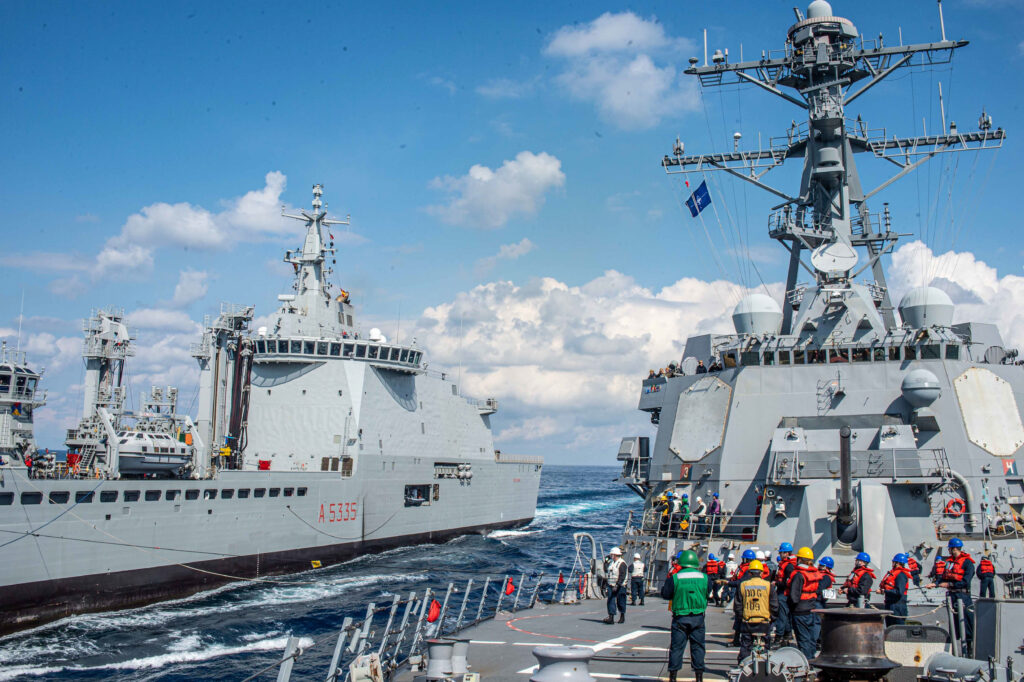
4. **Modern Naval Regulations: Defining Classification and Status**Building upon the foundational directives like President Roosevelt’s executive order, today’s Navy Regulations provide a comprehensive framework for the classification and status of naval ships and craft. These regulations ensure a consistent and structured approach to managing the diverse array of vessels within the U.S. Navy.
Article 0406 of the 1990 United States Navy Regulations explicitly assigns responsibility for these classifications. It states, “The Chief of Naval Operations shall be responsible for … the assignment of classification for administrative purposes to water-borne craft and the designation of status for each ship and service craft.” This highlights the CNO’s central role in maintaining the integrity of naval designations.
The regulations meticulously define the usage of various prefixes based on a ship’s status. For instance, “Commissioned vessels and craft shall be called ‘United States Ship’ or ‘U.S.S.'”, reinforcing the long-standing tradition.
Furthermore, the regulations specify that “Civilian crewed ships, of the Military Sealift Command or other commands, designated ‘active status, in service’ shall be called ‘United States Naval Ship’ or ‘U.S.N.S.'” Other ships and service craft designated “active status, in service,” but not covered by the preceding paragraph, are to be referred to by their name, classification, and hull number, such as “HIGH POINT PCH-1” or “YOGN-8,” illustrating a detailed system that covers every type of naval asset.
Military equipment: United States Navy
UnitName: United States Navy
Caption: Emblem of the United States Navy
Country: Flag
Type: Navy
Role: Naval warfare
Size: 334,896 active duty personnel
CommandStructure: Armed forces of the United States,United States Department of the Navy
Garrison: The Pentagon,Arlington County, Virginia
GarrisonLabel: Headquarters
Motto: lang
Colors: color box
ColorsLabel: Colors
March: Anchors Aweigh
Equipment: List of equipment of the United States Navy
StartDate: Continental Navy
Battles: collapsible list
Titlestyle: background:transparent;text-align:left;font-weight:normal;
Title: See list
Anniversaries: 13 October
Website: {{URL,www.navy.mil,navy.mil
Commander1: Flagicon image,President of the United States,Donald Trump
Commander1Label: Powers of the president of the United States#Commander-in-chief
Commander2: Flagicon image,Pete Hegseth
Commander2Label: United States Secretary of Defense
Commander3: Flagicon image,John Phelan (businessman)
Commander3Label: United States Secretary of the Navy
Commander4: Flagicon image,Admiral (United States),Daryl Caudle
Commander4Label: Chief of Naval Operations
Commander5: Flagicon image,Admiral (United States),James W. Kilby
Commander5Label: Vice Chief of Naval Operations
Commander6: File:MCPON.svg,Master Chief Petty Officer of the Navy,John J. Perryman IV
Commander6Label: Master Chief Petty Officer of the Navy
IdentificationSymbol: File:Flag of the United States Navy (official).svg
IdentificationSymbolLabel: Flag of the United States Navy
IdentificationSymbol2: File:Flag of the United States.svg
IdentificationSymbol2Label: Ensign of the United States
IdentificationSymbol3: File:Naval jack of the United States.svg
IdentificationSymbol3Label: Jack of the United States
IdentificationSymbol4: File:USNavyCommissionPennant.svg
IdentificationSymbol4Label: Commissioning pennant
IdentificationSymbol5Label: Anchor, Constitution, and Eagle
IdentificationSymbol6: File:Logo of the United States Navy.svg
IdentificationSymbol6Label: Logo
Categories: 1775 establishments in the Thirteen Colonies, All Wikipedia articles written in American English, All accuracy disputes, All articles containing potentially dated statements, All articles with dead external links
Summary: The United States Navy (USN) is the maritime service branch of the United States Department of Defense. It is the world’s most powerful navy with the largest displacement, at 4.5 million tons in 2021. It has the world’s largest aircraft carrier fleet, with eleven in service, one undergoing trials, two new carriers under construction, and six other carriers planned as of 2024. With 336,978 personnel on active duty and 101,583 in the Ready Reserve, the U.S. Navy is the third largest of the United States military service branches in terms of personnel. It has 299 deployable combat vessels and about 4,012 operational aircraft as of 18 July 2023. The U.S. Navy is one of six armed forces of the United States and one of eight uniformed services of the United States.
The United States Navy traces its origins to the Continental Navy, which was established during the American Revolutionary War and was effectively disbanded as a separate entity shortly thereafter. After suffering significant loss of goods and personnel at the hands of the Barbary pirates from Algiers, the United States Congress passed the Naval Act of 1794 for the construction of six heavy frigates, the first ships of the Navy. The United States Navy played a major role in the American Civil War by blockading the Confederacy and seizing control of its rivers. It played the central role in the World War II defeat of Imperial Japan. The United States Navy emerged from World War II as the most powerful navy in the world. The modern United States Navy maintains a sizable global presence, deploying in strength in such areas as the Western Pacific, the Mediterranean, and the Indian Ocean. It is a blue-water navy with the ability to project force onto the littoral regions of the world, engage in forward deployments during peacetime and rapidly respond to regional crises, making it a frequent actor in American foreign and military policy.
The United States Navy is part of the Department of the Navy, alongside the United States Marine Corps, which is its coequal sister service. The Department of the Navy is headed by the civilian secretary of the Navy. The Department of the Navy is itself a military department of the Department of Defense, which is headed by the secretary of defense. The chief of naval operations (CNO) is the most senior Navy officer serving in the Department of the Navy.
Get more information about: United States Navy

5. **CNO Admiral Caudle’s Mandate: Enhancing War-Fighting Advantage**Admiral Daryl Caudle, who assumed the crucial role of the 34th Chief of Naval Operations on August 25, has swiftly begun to articulate his strategic vision for the U.S. Navy. In a recent administrative message to sailors, he provided critical updates on his plans to leverage the service’s personnel and infrastructure, all with the overarching goal of achieving a decisive war-fighting advantage.
Caudle’s message underscored his firm expectations for the enhanced technical competence of service members across the fleet. This focus signals a recognition that in an increasingly complex global environment, superior technical skills are not just an advantage, but a necessity for operational success and maintaining deterrence.
The CNO framed his strategic initiatives around the urgent need to adapt to contemporary realities. He explicitly linked these efforts to countering the “proliferation of technology and the global evolution of threats,” indicating a proactive stance against adversaries who are continuously advancing their capabilities.
His mandate is clear: to ensure the Navy remains at the forefront of naval power, capable of meeting and overcoming any challenge posed by a dynamic and unpredictable international landscape. This involves a holistic approach that touches every aspect of naval operations, from individual sailor training to large-scale infrastructure projects.
Military equipment: XM2010 Enhanced Sniper Rifle
Manufacturer: Remington
Caliber: 300 WinMag
Barrel Length: 24 in.
Range: 1,200 meters
Categories: Army Equipment, Army Weapons, Infantry Weapons, Weapons
Get more information about: XM2010 Enhanced Sniper Rifle
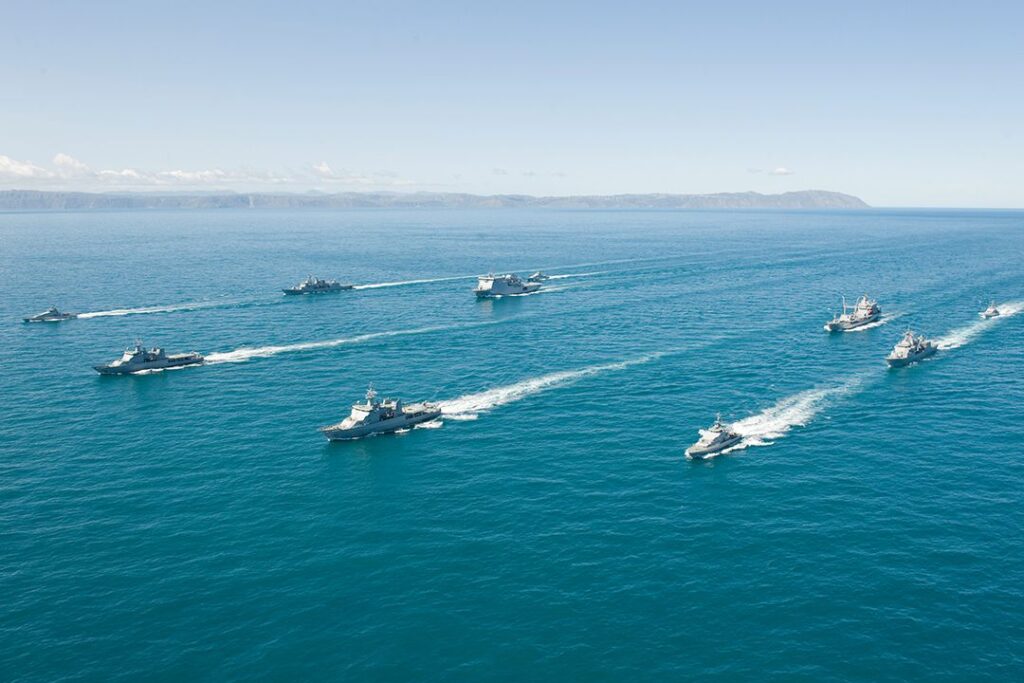
6. **The Foundry’s Foundation: Personnel as the Strongest Asset**Admiral Caudle’s comprehensive vision for the Navy’s future was initially outlined in an August 25 administrative message, further distilled into a graphic shared on X. This broader framework identified three critical areas of focus: the foundry, the fleet, and the fight, each representing a vital component of naval readiness and superiority.
The newest message from the Chief of Naval Operations provided a more in-depth look into his specific goals for the “foundry.” This particular area of focus emphasizes the fundamental role of the Navy’s human capital—its sailors—as the bedrock of its strength and operational effectiveness.
Caudle emphatically stated that the Navy’s personnel represent its strongest asset, crucial for remaining battle-tested against adversaries. This perspective places the individual sailor at the very heart of the Navy’s war-fighting capabilities, acknowledging that advanced technology is only as effective as the skilled hands and minds that operate it.
Consequently, the CNO stressed that developing, educating, and training service members is paramount to this entire effort. Investing in the human element—cultivating their skills, knowledge, and adaptability—is seen as the most critical pathway to maintaining a dominant and ready naval force, capable of facing the complex demands of modern warfare.
Military equipment: Tim Walz
Name: Tim Walz
Caption: Walz in 2024
Order: Governor of Minnesota
Lieutenant: Peggy Flanagan
TermStart: January 7, 2019
Predecessor: Mark Dayton
Office1: United States House Committee on Veterans’ Affairs
TermStart1: January 3, 2017
TermEnd1: January 3, 2019
Predecessor1: Mark Takano
Successor1: Phil Roe (politician)
State2: Minnesota
District2: ushr
TermStart2: January 3, 2007
TermEnd2: January 3, 2019
Predecessor2: Gil Gutknecht
Successor2: Jim Hagedorn
BirthName: Timothy James Walz
BirthDate: [object Object]
BirthPlace: West Point, Nebraska
Party: Democratic Party (United States)
Spouse: [object Object]
Children: 2
Residence: Minnesota Governor’s Residence,Eastcliff (mansion)
Education: Chadron State College,Minnesota State University, Mankato,Saint Mary’s University of Minnesota
Signature: TimWalzSignature.svg
Branch: Nebraska Army National Guard
Battles: Operation Enduring Freedom
Unit: 125th Field Artillery Regiment
Serviceyears: 1981–2005
Rank: Command sergeant major
Mawards: Commendation Medal,Achievement Medal,National Defense Service Medal,Global War on Terrorism Service Medal
Module: Listen
Categories: 1964 births, 2024 United States vice-presidential candidates, 20th-century American educators, 20th-century American military personnel, 20th-century Lutherans
Summary: Timothy James Walz ( ; born April 6, 1964) is an American politician, former educator, and Army National Guard veteran serving since 2019 as the 41st governor of Minnesota. He was a member of the U.S. House of Representatives from 2007 to 2019, and was the Democratic nominee for vice president in the 2024 U.S. presidential election.
Walz was born in West Point, Nebraska. After high school, he joined the Army National Guard and worked in a factory. He later graduated from Chadron State College in Nebraska and then moved to Minnesota in 1996. Before running for Congress, he was a high school social studies teacher and football coach. He was elected to the U.S. House of Representatives for Minnesota’s 1st congressional district in 2006, defeating six-term Republican incumbent Gil Gutknecht.
Walz was reelected to the House five times and was the ranking member of the House Veterans Affairs Committee from 2017 to 2019. He was elected governor of Minnesota in 2018 and reelected in 2022, holding office during the COVID-19 pandemic in Minnesota. During his first term, protests and riots related to the murder of George Floyd occurred. During his second term, he pushed for and signed a wide range of legislation, including tax modifications, free school meals, bolstering state infrastructure, universal gun background checks, codifying abortion rights, and free college tuition for low-income families.
On August 6, 2024, Vice President Kamala Harris announced Walz as her running mate in the 2024 election. Their ticket was defeated by Republican nominees Donald Trump and JD Vance.
On September 16, 2025, Walz announced that he would be running for a third term as Minnesota governor.
Get more information about: Tim Walz

7. **Curriculum Modernization: Keeping Pace with Technology and Threats**At the core of Admiral Caudle’s strategy for enhancing naval personnel is a steadfast commitment to modernizing the Navy’s educational curricula. This initiative is a direct response to the rapid advancements in technology and the ever-changing nature of global threats that define the contemporary security environment.
In his administrative message, Caudle articulated this necessity clearly, stating, “To keep pace with the proliferation of technology and the global evolution of threats, we are enhancing the quality of our curricula.” This commitment goes beyond minor adjustments, indicating a fundamental re-evaluation and upgrade of educational content and delivery.
The envisioned outcome of this curriculum overhaul is a cohort of sailors who are not just trained, but truly world-class, modernized, and battle-ready. Caudle explained the process: “Empowered by timely action and responses from our Navy’s top leaders, we will inculcate a culture of continuous learning that delivers world-class, modernized and battle-ready Sailors.”
This drive for modernization is not a one-time event, but rather an ongoing commitment to foster a “culture of continuous learning.” By embedding this philosophy throughout the Navy’s training systems, sailors will be equipped to consistently update their skills and knowledge, ensuring they remain proficient and adaptable in the face of emergent challenges and technological shifts throughout their careers.
Military equipment: Lockheed Martin F-35 Lightning II
Name: F-35 Lightning II
AircraftType: Multirole combat aircraft,strike fighter
NationalOrigin: United States
Manufacturer: Lockheed Martin
FirstFlight: Start date and age
Introduction: F-35B: 31 July 2015 (USMC),F-35A: 2 August 2016 (USAF),F-35C: 28 February 2019 (USN)
Status: In service
PrimaryUser: United States Air Force
MoreUsers: United States Navy,United States Marine Corps,#Operators
Produced: 2006–present
NumberBuilt: As of
DevelopedFrom: Lockheed Martin X-35
Categories: 2000s United States fighter aircraft, Aircraft first flown in 2006, Aircraft with retractable tricycle landing gear, All Wikipedia articles in need of updating, All Wikipedia articles written in American English
Summary: The Lockheed Martin F-35 Lightning II is an American family of single-seat, single-engine, supersonic stealth strike fighters. A multirole combat aircraft designed for both air superiority and strike missions, it also has electronic warfare and intelligence, surveillance, and reconnaissance capabilities. Lockheed Martin is the prime F-35 contractor with principal partners Northrop Grumman and BAE Systems. The aircraft has three main variants: the conventional takeoff and landing (CTOL) F-35A, the short take-off and vertical-landing (STOVL) F-35B, and the carrier variant (CV) catapult-assisted take-off but arrested recovery (CATOBAR) F-35C.
The aircraft descends from the Lockheed Martin X-35, which in 2001 beat the Boeing X-32 to win the Joint Strike Fighter (JSF) program intended to replace the F-16 Fighting Falcon, F/A-18 Hornet, and the McDonnell Douglas AV-8B Harrier II “jump jet”, among others. Its development is primarily funded by the United States, with additional funding from program partner countries from the North Atlantic Treaty Organization (NATO) and close U.S. allies, including Australia, Canada, Denmark, Italy, the Netherlands, Norway, the United Kingdom, and formerly Turkey. Several other countries have also ordered, or are considering ordering, the aircraft. The program has drawn criticism for its unprecedented size, complexity, ballooning costs, and delayed deliveries. The acquisition strategy of concurrent production of the aircraft while it was still in development and testing led to expensive design changes and retrofits. As of July 2024, the average flyaway costs per plane are: US$82.5 million for the F-35A, $109 million for the F-35B, and $102.1 million for the F-35C.
The F-35 first flew in 2006 and entered service with the U.S. Marine Corps F-35B in July 2015, followed by the U.S. Air Force F-35A in August 2016 and the U.S. Navy F-35C in February 2019. The aircraft was first used in combat by the Israeli Air Force’s 2018 strikes in Syria. F-35 variants have seen subsequent combat use by Israel in Iraq, Gaza, Lebanon, Yemen, and Iran; by the US in Afghanistan, Iraq, Yemen, and Iran; and by the UK in Iraq and Syria. F-35As contribute to US nuclear forward deployment in European NATO countries. The U.S. plans to buy 2,456 F-35s through 2044, which will represent the bulk of the crewed tactical aviation of the U.S. Air Force, Navy, and Marine Corps for several decades; the aircraft is planned to be a cornerstone of NATO and U.S.-allied air power and to operate to 2070.
Get more information about: Lockheed Martin F-35 Lightning II

8. **The Career Training Continuum: Evolving Sailor Education**Admiral Caudle announced the Navy would rename the Ready Relevant Learning program, a significant step in re-evaluating and upgrading educational content. This initiative, now known as the “Career Training Continuum,” aims to solidify the Navy’s commitment to continuous learning for its service members. The name change reflects a broader vision for sailor development, extending beyond initial training to encompass a career-long educational journey.
The newly designated Career Training Continuum is designed to focus specifically on individual training and persistent career-long learning. This emphasis underscores the understanding that in a rapidly evolving technological landscape, continuous skill acquisition and knowledge updates are essential for maintaining operational superiority. The program is tailored to ensure that sailors are not only proficient in their current roles but are also prepared for future advancements and challenges throughout their naval careers.
A key objective of the Career Training Continuum is to directly support Caudle’s overarching focus on maintaining battle-ready sailors through modernization and enhanced education. The program seeks to identify and remediate any existing gaps in sailor training, ensuring that all service members possess the necessary technical competencies. This proactive approach aims to eliminate deficiencies and reinforce the Navy’s human capital as its strongest asset against adversaries.
Furthermore, the CNO indicated that the expansion of technology would play a crucial role in these efforts. Integrating modern technological tools and platforms into the continuum will allow for more dynamic and effective training methods. This strategic blend of updated curriculum and advanced technology is intended to produce a more adaptable and technically proficient naval force, capable of responding to complex global threats.
Military equipment: Liverpool
Name: Liverpool
SettlementType: City status in the United Kingdom
Border: infobox
Perrow: 1/2/2/2
TotalWidth: 270px
Align: center
Caption1: Pier Head
Caption2: Albert Dock, Liverpool
Caption3: Mersey Ferries
Caption4: St George’s Hall, Liverpool
Caption5: Liverpool Town Hall
Caption6: Liverpool Metropolitan Cathedral
Caption7: Liverpool Cathedral
ShieldLink: Coat of arms of Liverpool
Motto: langx
MapCaption: Merseyside
Coordinates: Wikidatacoord
SubdivisionType: Sovereign state
SubdivisionName: United Kingdom
SubdivisionType1: Countries of the United Kingdom
SubdivisionName1: England
SubdivisionType2: Regions of England
SubdivisionName2: North West England
SubdivisionType3: Ceremonial counties of England
SubdivisionName3: Merseyside
SubdivisionType4: Historic counties of England
SubdivisionName4: Lancashire
SubdivisionType5: City region (United Kingdom)
SubdivisionName5: Liverpool City Region
EstablishedTitle: Founded
EstablishedDate: Sun Dec 31 1206 16:07:02 GMT-0752 (Pacific Standard Time)
EstablishedTitle1: City status
EstablishedDate1: Wed Dec 31 1879 16:07:02 GMT-0752 (Pacific Standard Time)
EstablishedTitle2: Metropolitan borough
EstablishedDate2: Local Government Act 1972
SeatType: Administrative HQ
Seat: Cunard Building
GovernmentType: Metropolitan borough
GoverningBody: Liverpool City Council
LeaderTitle: Executive arrangements
LeaderName: Executive arrangements#Leader and cabinet
LeaderTitle1: Political make-up of local councils in the United Kingdom
LeaderName1: English district control
LeaderTitle2: Executive arrangements#Leader and cabinet
LeaderName2: Liam Robinson (politician)
LeaderTitle3: Lord Mayor of Liverpool
LeaderName3: Barbara Murray
LeaderTitle4: Member of Parliament (United Kingdom)
LeaderName4: Collapsible list
Title: 5 MPs
UnitPref: Metric
AreaTotalKm2: 134
AreaLandKm2: English district area
AreaRank: List of English districts by area
PopulationAsOf: English statistics year
PopulationTotal: English district population
PopulationRank: List of English districts by population
PopulationDensityKm2: English district density
PopulationDemonym: Liverpudlian,Colloquialism
DemographicsType1: 2021 United Kingdom census
Demographics1Title1: Ethnic groups in the United Kingdom
Demographics1Info1: Collapsible list
DemographicsType2: Religion (2021)
Demographics2Title1: Religion in England
Demographics2Info1: Collapsible list
Timezone1: Greenwich Mean Time
UtcOffset1: +0
Timezone1Dst: British Summer Time
UtcOffset1Dst: +1
PostalCodeType: Postcodes in the United Kingdom
PostalCode: L postcode area
AreaCodeType: Telephone numbers in the United Kingdom
AreaCode: 0151
IsoCode: ISO 3166-2:GB
Blank1Name: GSS coding system
Blank1Info: E08000012
Website: liverpool.gov.uk
PartsType: Districts of the city
P1: Aigburth
P2: Allerton, Liverpool
P3: Anfield (suburb)
P4: Belle Vale, Liverpool
P5: Broadgreen
P6: Canning, Liverpool
P7: Childwall
P8: Chinatown, Liverpool
P9: Liverpool city centre
P10: Clubmoor
P11: Croxteth
P12: Dingle, Liverpool
P13: Dovecot, Liverpool
P14: Edge Hill, Liverpool
P15: Everton, Liverpool
P16: Fairfield, Liverpool
P17: Fazakerley
P18: Garston, Liverpool
P19: Gateacre
P20: Gillmoss
P21: Grassendale
P22: Hunt’s Cross
P23: Kensington, Liverpool
P24: Kirkdale, Liverpool
P25: Knotty Ash
P26: Mossley Hill
P27: Netherley, Liverpool
P28: Norris Green
P29: Oglet
P30: Old Swan
P31: Orrell Park
P32: Sefton Park (district)
P33: St Michael’s Hamlet
P34: Speke
P35: Stoneycroft
P36: Toxteth
P37: Tuebrook
P38: Vauxhall, Liverpool
P39: Walton, Liverpool
P40: Wavertree
P41: West Derby
P42: Woolton
Categories: 1207 establishments in England, All Wikipedia articles written in British English, All articles containing potentially dated statements, All articles with dead external links, All articles with unsourced statements
Summary: Liverpool is a port city and metropolitan borough in Merseyside, England. It is situated on the eastern side of the Mersey Estuary, near the Irish Sea, 178 miles (286 km) northwest of London. It had a population of 496,770 in 2022 and is the administrative, cultural, and economic centre of the Liverpool City Region, a combined authority area with a population of over 1.5 million.
Established as a borough in Lancashire in 1207, Liverpool became significant in the late 17th century when the Port of Liverpool was heavily involved in the Atlantic slave trade. The port also imported cotton for the Lancashire textile mills, and became a major departure point for English and Irish emigrants to North America. Liverpool rose to global economic importance at the forefront of the Industrial Revolution in the 19th century and was home to the first intercity railway, the first non-combustible warehouse system (the Royal Albert Dock), and a pioneering elevated electrical railway; it was granted city status in 1880 and was moved from Lancashire to the newly created county of Merseyside in 1974. It entered a period of decline in the mid-20th century, which was largely reversed after the European Union selected it as the European Capital of Culture for 2008, reportedly generating over £800 million for the local economy within a year.
The economy of Liverpool is diverse and encompasses tourism, culture, maritime, hospitality, healthcare, life sciences, advanced manufacturing, creative, and digital sectors. The city is home to the UK’s second highest number of art galleries, national museums, listed buildings, and parks and open spaces, behind only London. It is often used as a filming location due to its architecture and was the fifth most visited UK city by foreign tourists in 2022. It has produced numerous musicians, most notably the Beatles, and recording artists from the city have had more UK No. 1 singles than anywhere else in the world. It has also produced numerous academics, actors, artists, comedians, filmmakers, poets, scientists, sportspeople, and writers. It is the home of Premier League football teams Everton and Liverpool. The world’s oldest still-operating mainline train station, Liverpool Lime Street, is in the city centre; it is also served by the underground Merseyrail network. The city’s port was the fourth largest in the UK in 2023, with numerous shipping and freight lines having headquarters and offices there.
Residents of Liverpool are formally known as Liverpudlians but are more often called Scousers in reference to scouse, a local stew made popular by sailors. The city’s distinct local accent is also primarily known as Scouse. Its cultural and ethnic diversity is the result of attracting immigrants from various areas, particularly Ireland, Scandinavia, and Wales; it is also home to the UK’s oldest black community and Europe’s oldest Chinese community, as well as the first mosque in England.
Get more information about: Liverpool
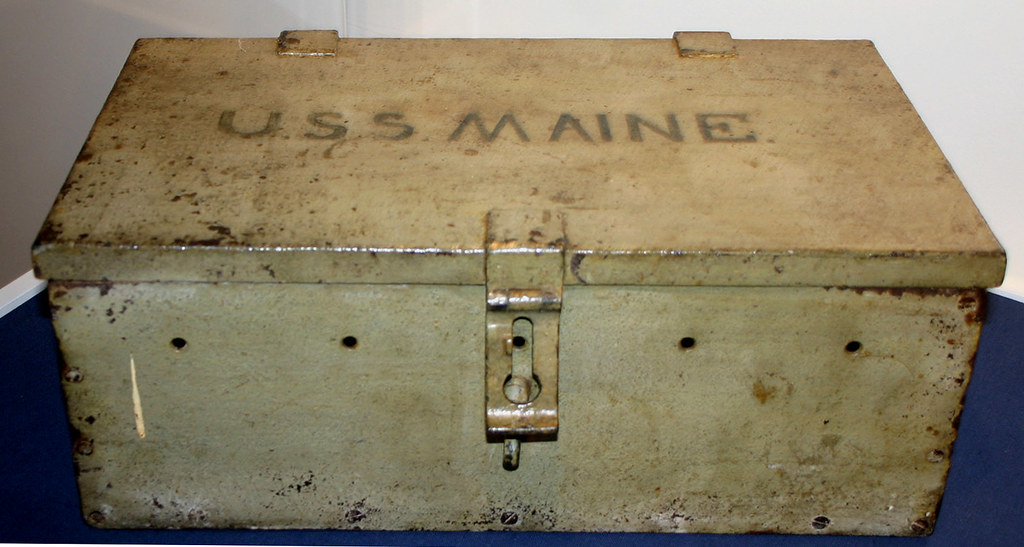
9. **Expanding Live-Virtual-Constructive (LVC) Training Efforts**Admiral Caudle has directed a significant expansion of the Navy’s Live-Virtual-Constructive (LVC) training efforts, moving beyond their current applications. This directive signifies a strategic shift toward a more comprehensive and integrated approach to simulation-based training, crucial for enhancing readiness in a technologically advanced battlespace. The expansion aims to harness the full potential of LVC environments to prepare sailors for multifaceted operational scenarios.
Currently, LVC efforts are utilized in specific contexts, such as integrated Command and Control Exercise (C2X) training and Fallon airwing events. Caudle’s message calls for a generalized view of LVC, indicating a broader application across various training domains. This expansion means that LVC capabilities will no longer be confined to specialized large-scale exercises but will be integrated into a wider array of training paradigms.
The generalized view of LVC will span from unit-level training to schoolhouse utilization and extend to tailored wargaming scenarios. This comprehensive integration ensures that individual units, educational institutions, and strategic planning exercises all benefit from advanced simulation technology. Such widespread application allows sailors at all levels to experience realistic, complex operational environments without the logistical constraints or risks associated with live exercises.
This strategic enhancement through LVC is expected to provide invaluable opportunities for skill development and decision-making practice. By simulating diverse threat landscapes and operational challenges, the Navy can cultivate a force that is not only technically proficient but also tactically astute. The expansion directly supports the CNO’s vision of a continuously learning and battle-ready Navy, capable of outmaneuvering sophisticated adversaries.
Military equipment: Live, virtual, and constructive
Categories: All articles covered by WikiProject Wikify, All pages needing cleanup, Articles covered by WikiProject Wikify from March 2015, Articles needing cleanup from October 2014, Articles with multiple maintenance issues
Summary: Live, Virtual, & Constructive (LVC) Simulation is a broadly used taxonomy for classifying Modeling and Simulation (M&S). However, categorizing a simulation as a live, virtual, or constructive environment is problematic since there is no clear division among these categories. The degree of human participation in a simulation is infinitely variable, as is the degree of equipment realism. The categorization of simulations also lacks a category for simulated people working real equipment.
Get more information about: Live, virtual, and constructive
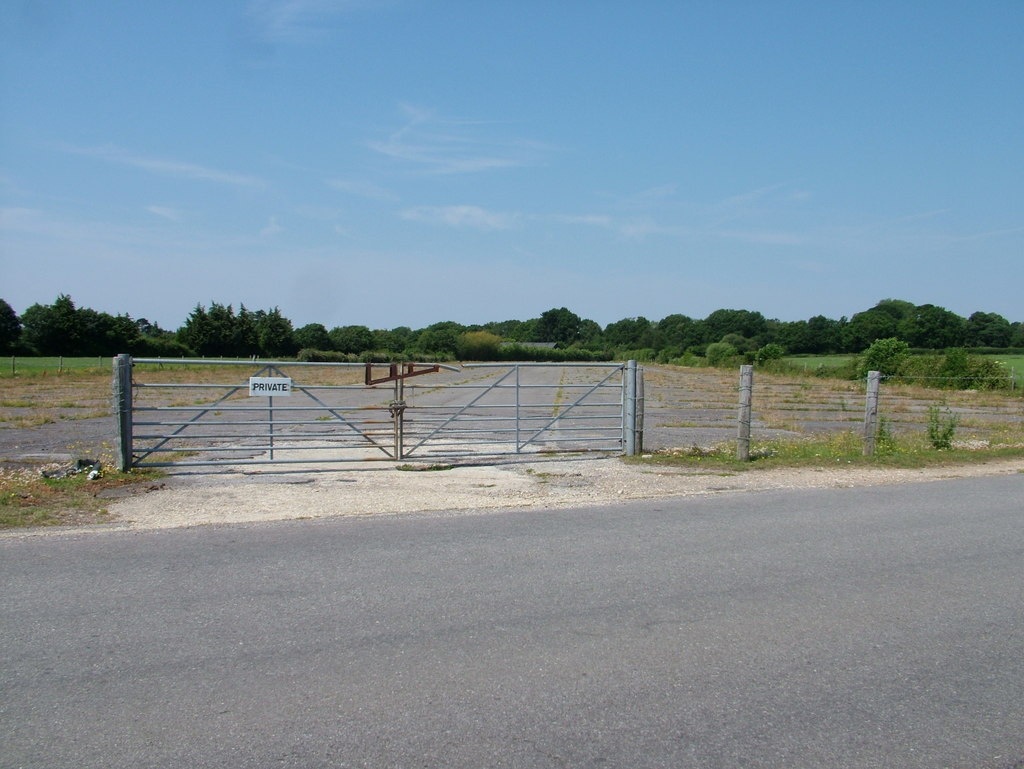
10. **Modernizing Critical Infrastructure: Shipyards, Airfields, and Barracks**Admiral Caudle has emphatically stressed the critical importance of modernizing the Navy’s foundational infrastructure, specifically highlighting shipyards, airfields, and barracks. This focus underscores a recognition that the physical assets supporting naval operations are as vital as the personnel and technology operating them. Outdated infrastructure can impede readiness and operational efficiency, necessitating a comprehensive upgrade strategy.
The modernization efforts are directly linked to ensuring the Navy’s overall war-fighting readiness. Well-maintained and technologically advanced shipyards are essential for timely maintenance and repair of vessels, guaranteeing that ships can return to sea promptly. Similarly, modern airfields are crucial for supporting aviation operations, while updated barracks enhance the quality of life for service members, positively impacting morale and retention.
Caudle’s administrative message outlined this imperative, emphasizing that these infrastructure improvements are not merely cosmetic but strategic necessities. He implicitly acknowledged that a robust and modernized support system is a prerequisite for a battle-ready fleet. This holistic approach to readiness ensures that every component, from the largest warship to the smallest support facility, contributes to the Navy’s strategic objectives.
The Chief of Naval Operations also promised a future administrative message specifically dedicated to elaborating on the importance of naval infrastructure in service of war-fighting readiness. This upcoming communication suggests the depth of the Navy’s commitment to addressing these foundational issues, signaling a long-term investment in the physical backbone of the fleet to maintain its global preeminence.
Military equipment: Timeline of the Russian invasion of Ukraine (8 June 2023 – 31 August 2023)
Categories: 2023 in Russia, 2023 in Ukraine, 2023 timelines, Articles with short description, CS1 Russian-language sources (ru)
Summary: This timeline of the Russian invasion of Ukraine covers the period from 8 June 2023, when the 2023 Ukrainian counteroffensive began, to 31 August 2023.
Get more information about: Timeline of the Russian invasion of Ukraine (8 June 2023 – 31 August 2023)

11. **Workforce Development and Project Management for Operational Timelines**To meet critical operational timelines, Admiral Caudle has outlined a strategy centered on robust workforce development and top-tier project management. This dual focus acknowledges that simply having modern infrastructure is insufficient without the skilled personnel and efficient processes to utilize and maintain it. The CNO’s directives aim to streamline operations and enhance productivity across naval maintenance and construction.
A significant component of this strategy involves improving shipyard training and workplace conditions. Caudle emphasized the need to strengthen second and third shifts in public shipyards, recognizing their vital role in accelerating maintenance and construction schedules. By investing in better training and working environments, the Navy aims to increase the capacity and efficiency of its shipyard workforce, directly impacting the speed at which vessels are prepared for deployment.
The CNO identified an increase in on-time delivery and improved workforce retention as direct catalysts for achieving these goals. By ensuring that projects are completed as scheduled and that skilled personnel are retained within the Navy’s public shipyards, the service can mitigate delays and maintain a consistent pace of operations. This approach recognizes the intrinsic link between human capital and timely execution of critical naval functions.
Ultimately, these initiatives are designed to foster a more resilient and responsive naval industrial base. By prioritizing the development of a highly skilled workforce and implementing superior project management techniques, the Navy intends to enhance its ability to conduct essential maintenance, overhauls, and modernization efforts. This focus ensures that the fleet remains operational and capable of meeting its global commitments on schedule.
Military equipment: Project manager
Categories: All articles needing additional references, All articles with unsourced statements, Articles needing additional references from December 2008, Articles with short description, Articles with unsourced statements from October 2024
Summary: A project manager is a professional in the field of project management. Project managers have the responsibility of the planning, procurement and execution of a project, in any undertaking that has a defined scope, defined start and a defined finish; regardless of industry. Project managers are first point of contact for any issues or discrepancies arising from within the heads of various departments in an organization before the problem escalates to higher authorities, as project representative.
Project management is the responsibility of a project manager. This individual seldom participates directly in the activities that produce the result, but rather strives to maintain the progress, mutual interaction and tasks of various parties in such a way that reduces the risk of overall failure, maximizes benefits, and minimizes costs.
Get more information about: Project manager
Read more about: Deep Scars in Protected Lands: Unraveling the Massive Illegal Operation and Systemic Threats within U.S. National Parks

12. **Reforming Naval Maintenance: Addressing Skill Gaps**Admiral Caudle has articulated concerns regarding the Navy’s current maintenance structure, specifically highlighting reduced opportunities for sailors to master critical skills. This issue, a significant challenge to operational readiness, limits the ability of service members to independently repair naval machinery and vessels while at sea. The CNO’s assessment indicates a need for a fundamental re-evaluation of how maintenance proficiencies are developed and sustained within the fleet.
The reduced opportunities for hands-on skill development directly impact the self-sufficiency of naval vessels. In modern naval operations, the ability to conduct immediate repairs and troubleshoot complex systems at sea is paramount. A deficiency in these skills can lead to prolonged downtimes, increased reliance on shore-based support, and a potential reduction in operational tempo and effectiveness during deployments.
Caudle’s message implicitly signals a move towards empowering sailors with greater technical autonomy and proficiency in shipboard maintenance. By identifying these skill gaps, the Navy aims to implement corrective measures that will provide more practical, hands-on experience. This focus ensures that sailors are not merely operators but also skilled maintainers, capable of ensuring the continuous functioning of their sophisticated equipment.
Addressing these maintenance structure issues is essential for upholding the Navy’s commitment to readiness. A force capable of self-sustaining repairs minimizes vulnerability and maximizes operational endurance, particularly in contested environments. The CNO’s recognition of this challenge and his pursuit of solutions underscore a proactive stance on improving fundamental naval capabilities.
Military equipment: Royal Navy
UnitName: Royal Navy
StartDate: [object Object]
Country: flagicon,United Kingdom
Type: Navy
Role: Naval warfare
Size: 31,812 active personnel,3,235 maritime reserve,2,454 other personnel,List of active Royal Navy ships,Fleet Air Arm
CommandStructure: His Majesty’s Naval Service
Garrison: Ministry of Defence Main Building,London
GarrisonLabel: Naval Staff Offices
Nickname: Senior Service
Motto: native phrase
Colours: [object Object]
ColoursLabel: Colours
March: Heart of Oak
Equipment: HMS Victory,aircraft carriers,submarines,destroyers,frigates,River-class patrol vessel,mine countermeasures vessel,18 fast patrol boats,survey ships,icebreaker
EquipmentLabel: List of active Royal Navy ships
Website: Official URL
Commander1: Flagicon image,King Charles III
Commander1Label: Head of the Armed Forces
Commander2: Flagicon image,General (United Kingdom),Gwyn Jenkins
Commander2Label: First Sea Lord and Chief of the Naval Staff
Commander3: Flagicon image,Vice Admiral (Royal Navy),Martin Connell (Royal Navy officer)
Commander3Label: Second Sea Lord
Commander4: Flagicon image,Vice Admiral (Royal Navy),Steve Moorhouse
Commander4Label: Fleet Commander
Commander5: File:British Corps Regimental Sergeant Major.svg,Warrant officer (United Kingdom)#Royal Marines
Commander5Label: Warrant Officer to the Royal Navy
IdentificationSymbol: File:Naval Ensign of the United Kingdom.svg
IdentificationSymbolLabel: White Ensign
IdentificationSymbol2: File:Flag of the United Kingdom.svg
IdentificationSymbol2Label: Naval jack
IdentificationSymbol3: File:Royal Navy commissioning pennant (with outline).svg
IdentificationSymbol3Label: Commissioning pennant
IdentificationSymbol4: File:King’s Colour for the Royal Navy.svg
IdentificationSymbol4Label: King’s Colour
AircraftAttack: AgustaWestland AW159 Wildcat,Lockheed Martin F-35 Lightning II
AircraftFighter: Lockheed Martin F-35 Lightning II
AircraftRecon: AgustaWestland AW159 Wildcat,AeroVironment Wasp III,AeroVironment RQ-20 Puma,Schiebel Camcopter S-100
AircraftPatrol: AgustaWestland AW101,AgustaWestland AW159 Wildcat
AircraftTrainer: Beechcraft Super King Air,Eurocopter EC135,Grob G 120TP,Grob G 115
AircraftTransport: AgustaWestland AW101
Categories: 1660 establishments in England, 16th-century establishments in England, 1707 establishments in Great Britain, All Wikipedia articles written in British English, All articles containing potentially dated statements
Summary: The Royal Navy (RN) is the naval warfare force of the United Kingdom. It is a component of His Majesty’s Naval Service, and its officers hold their commissions from the King. Although warships were used by English and Scottish kings from the early medieval period, the first major maritime engagements were fought in the Hundred Years’ War against France. The modern Royal Navy traces its origins to the English Navy of the early 16th century; the oldest of the UK’s armed services, it is consequently known as the Senior Service.
From the early 18th century until the Second World War, it was the world’s most powerful navy. The Royal Navy played a key part in establishing and defending the British Empire, and four Imperial fortress colonies and a string of imperial bases and coaling stations secured the Royal Navy’s ability to assert naval superiority. Following World War I, it was significantly reduced in size. During the Cold War, the Royal Navy transformed into a primarily anti-submarine force, hunting for Soviet submarines and mostly active in the GIUK gap. Following the collapse of the Soviet Union, its focus returned to expeditionary operations.
The Royal Navy maintains a fleet of technologically sophisticated ships, submarines, and aircraft, including two aircraft carriers, four ballistic missile submarines (which maintain the nuclear deterrent), six nuclear fleet submarines, six guided missile destroyers, eight frigates, eight mine-countermeasure vessels and twenty-six patrol vessels. As September 2025, there are 64 active and commissioned ships (including submarines as well as one historic ship, HMS Victory) in the Royal Navy, plus 10 ships of the Royal Fleet Auxiliary (RFA). There are also four Point-class sealift ships from the Merchant Navy available to the RFA under a private finance initiative, while the civilian Marine Services operate auxiliary vessels which further support the Royal Navy in various capacities. The RFA replenishes Royal Navy warships at sea and, as of 2024–25, provides the lead elements of the Royal Navy’s amphibious warfare capabilities through its three Bay-class landing ship vessels. It also works as a force multiplier for the Royal Navy, often doing patrols that frigates used to do.
The Royal Navy is part of His Majesty’s Naval Service, which also includes the Royal Marines and the Royal Fleet Auxiliary. The professional head of the Naval Service is the First Sea Lord who is an admiral and member of the Defence Council of the United Kingdom. The Defence Council delegates management of the Naval Service to the Admiralty Board, chaired by the secretary of state for defence. The Royal Navy operates from three bases in Britain where commissioned ships and submarines are based: Portsmouth, Clyde and Devonport, the last being the largest operational naval base in Western Europe, as well as two naval air stations, RNAS Yeovilton and RNAS Culdrose where maritime aircraft are based.
Get more information about: Royal Navy

13. **Establishing Shore Intermediate Maintenance Activities (SIMAs)**To directly address the identified shortcomings in naval maintenance and skill development, Admiral Caudle announced plans to pursue the stand-up of Shore Intermediate Maintenance Activities (SIMAs). These new facilities represent a strategic investment in enhancing the repair capabilities and technical expertise of Navy personnel, marking a significant step towards a more robust and self-reliant fleet maintenance system.
The CNO specified two initial locations for these critical facilities: Norfolk, Virginia, and San Diego. These sites were chosen strategically, likely due to their status as major naval hubs, allowing for broad access by fleet personnel and maximizing their impact on fleet readiness. The establishment of SIMAs in these key locations will provide localized, specialized support for a wide range of naval vessels.
The primary purpose of these Shore Intermediate Maintenance Activities is to provide sailors with essential hands-on training in advanced ship repair. This direct, practical experience is crucial for bridging the skill gaps previously identified by Caudle. By offering dedicated facilities for comprehensive repair training, the Navy aims to cultivate a generation of highly competent maintainers capable of tackling complex engineering challenges.
These SIMAs are envisioned as centers of excellence, where sailors can immerse themselves in real-world maintenance scenarios under expert guidance. The investment in these facilities underscores the Navy’s commitment to equipping its personnel with the practical knowledge and skills required to keep its fleet operational and technologically superior in any environment.
Military equipment: Naval Station Pascagoula
Categories: 1992 establishments in Mississippi, 2006 disestablishments in Mississippi, All Wikipedia articles written in American English, Articles with short description, Buildings and structures in Jackson County, Mississippi
Summary: Naval Station Pascagoula (NAVSTA Pascagoula) was a base of the United States Navy, in Pascagoula, Mississippi. The base officially closed 15 November 2006. The base’s property, on Singing River Island in the Mississippi Sound at the mouth of the Pascagoula River, was formally transferred to the Mississippi Secretary of State’s office 9 July 2007.
Get more information about: Naval Station Pascagoula

14. **Integrating Advanced Technologies at SIMAs**A pivotal aspect of the new Shore Intermediate Maintenance Activities (SIMAs) will be their role in exposing sailors to modern capabilities and advanced technologies. Admiral Caudle highlighted the integration of cutting-edge tools and systems within these facilities, ensuring that naval personnel are proficient with the latest innovations in ship repair and maintenance. This forward-looking approach positions SIMAs as hubs for technological adoption.
Sailors attending SIMAs will receive hands-on training that includes exposure to Artificial Intelligence/Machine Learning (AI/ML) applications. This introduction will enable them to understand how these advanced analytical tools can optimize maintenance schedules, predict equipment failures, and enhance diagnostic accuracy. Integrating AI/ML is crucial for developing a smarter, more efficient maintenance strategy that leverages data-driven insights.
Furthermore, the facilities will feature advanced manufacturing technologies, such as 3-D printing and Computer-Aided Design/Computer-Aided Manufacturing (CAD/CAM) systems. These capabilities allow for on-demand production of critical parts and complex component fabrication, reducing reliance on external supply chains and accelerating repair timelines. Exposure to such technologies ensures that sailors are prepared for a future where on-site digital manufacturing is commonplace.
Caudle also mentioned the inclusion of workflow monitoring technologies and robotic systems. These innovations will familiarize sailors with automated processes and precision repair techniques, preparing them for an increasingly automated maintenance environment. By providing comprehensive training on these integrated technologies, SIMAs will play a vital role in cultivating a technologically adept workforce capable of maintaining the Navy’s sophisticated fleet into the future.
Military equipment: Google DeepMind
Name: DeepMind Technologies Limited
Logo: DeepMind new logo.svg
LogoUpright: 1.2
TradingName: Google DeepMind
Founded: [object Object]
Location: London, England
Founders: Demis Hassabis,Shane Legg,Mustafa Suleyman
KeyPeople: Unbulleted list
Industry: Artificial intelligence
Parent: DeepMind Holdings Limited
Type: Subsidiary
Owner: Alphabet Inc.
NumEmployees: circa
Products: AlphaGo,AlphaStar (software),AlphaFold,AlphaZero
Revenue: increase £1.53 billion (2023)
OperatingIncome: increase £136 million (2023)
NetIncome: increase £113 million (2023)
Website: https://deepmind.google/
Categories: 2010 establishments in England, 2014 mergers and acquisitions, All Wikipedia articles written in British English, Alphabet Inc. subsidiaries, Applied machine learning
Summary: DeepMind Technologies Limited, trading as Google DeepMind or simply DeepMind, is a British–American artificial intelligence research laboratory which serves as a subsidiary of Alphabet Inc. Founded in the UK in 2010, it was acquired by Google in 2014 and merged with Google AI’s Google Brain division to become Google DeepMind in April 2023. The company is headquartered in London, with research centres in the United States, Canada, France, Germany, and Switzerland.
In 2014, DeepMind introduced neural Turing machines (neural networks that can access external memory like a conventional Turing machine). The company has created many neural network models trained with reinforcement learning to play video games and board games. It made headlines in 2016 after its AlphaGo program beat Lee Sedol, a Go world champion, in a five-game match, which was later featured in the documentary AlphaGo. A more general program, AlphaZero, beat the most powerful programs playing go, chess and shogi (Japanese chess) after a few days of play against itself using reinforcement learning. DeepMind has since trained models for game-playing (MuZero, AlphaStar), for geometry (AlphaGeometry), and for algorithm discovery (AlphaEvolve, AlphaDev, AlphaTensor).
In 2020, DeepMind made significant advances in the problem of protein folding with AlphaFold, which achieved state of the art records on benchmark tests for protein folding prediction. In July 2022, it was announced that over 200 million predicted protein structures, representing virtually all known proteins, would be released on the AlphaFold database.
Google DeepMind has become responsible for the development of Gemini (Google’s family of large language models) and other generative AI tools, such as the text-to-image model Imagen, the text-to-video model Veo, and the text-to-music model Lyria.
Get more information about: Google DeepMind
The strategic initiatives outlined by Admiral Caudle, from comprehensive personnel development and advanced LVC training to the modernization of critical infrastructure and the establishment of technologically advanced maintenance facilities, collectively underscore a singular, unwavering commitment: to ensure the U.S. Navy remains at the zenith of global naval power. These concerted efforts, meticulously detailed in administrative messages, articulate a clear and actionable pathway towards a force that is not only battle-ready but also perpetually learning, adapting, and leading in an era of rapid technological and geopolitical shifts. The journey ahead is one of continuous evolution, driven by a vision to harness every asset—human and material—to secure a decisive advantage for the nation’s defense.



